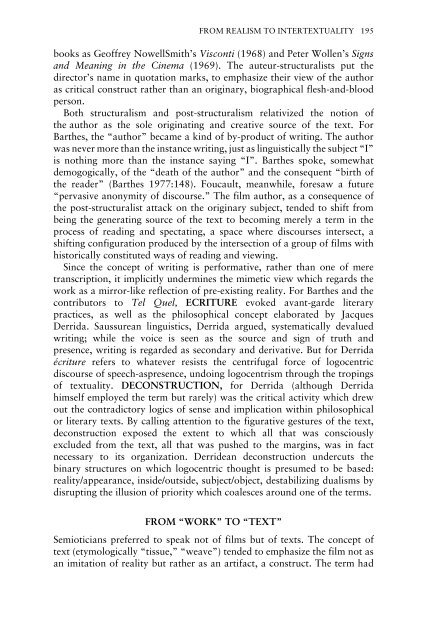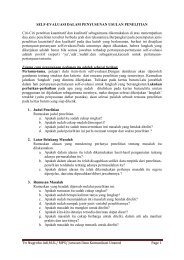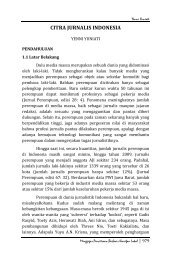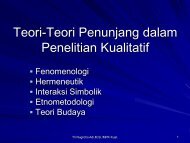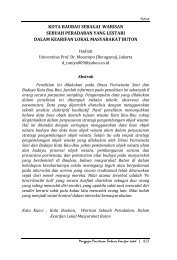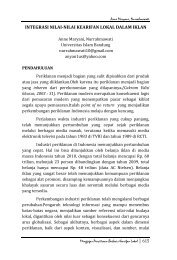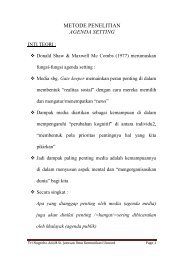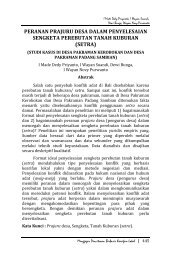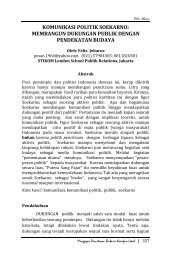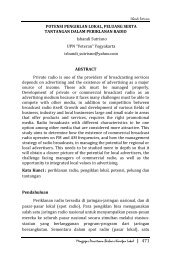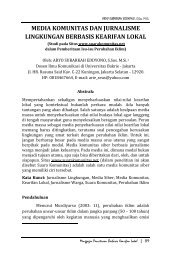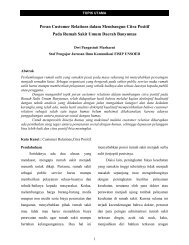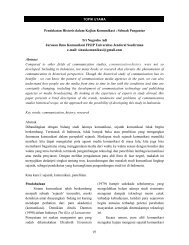New Vocabularies in Film Semiotics
New Vocabularies in Film Semiotics
New Vocabularies in Film Semiotics
Create successful ePaper yourself
Turn your PDF publications into a flip-book with our unique Google optimized e-Paper software.
FROM REALISM TO INTERTEXTUALITY 195<br />
books as Geoffrey NowellSmith’s Visconti (1968) and Peter Wollen’s Signs<br />
and Mean<strong>in</strong>g <strong>in</strong> the C<strong>in</strong>ema (1969). The auteur-structuralists put the<br />
director’s name <strong>in</strong> quotation marks, to emphasize their view of the author<br />
as critical construct rather than an orig<strong>in</strong>ary, biographical flesh-and-blood<br />
person.<br />
Both structuralism and post-structuralism relativized the notion of<br />
the author as the sole orig<strong>in</strong>at<strong>in</strong>g and creative source of the text. For<br />
Barthes, the “author” became a k<strong>in</strong>d of by-product of writ<strong>in</strong>g. The author<br />
was never more than the <strong>in</strong>stance writ<strong>in</strong>g, just as l<strong>in</strong>guistically the subject “I”<br />
is noth<strong>in</strong>g more than the <strong>in</strong>stance say<strong>in</strong>g “I”. Barthes spoke, somewhat<br />
demogogically, of the “death of the author” and the consequent “birth of<br />
the reader” (Barthes 1977:148). Foucault, meanwhile, foresaw a future<br />
“pervasive anonymity of discourse.” The film author, as a consequence of<br />
the post-structuralist attack on the orig<strong>in</strong>ary subject, tended to shift from<br />
be<strong>in</strong>g the generat<strong>in</strong>g source of the text to becom<strong>in</strong>g merely a term <strong>in</strong> the<br />
process of read<strong>in</strong>g and spectat<strong>in</strong>g, a space where discourses <strong>in</strong>tersect, a<br />
shift<strong>in</strong>g configuration produced by the <strong>in</strong>tersection of a group of films with<br />
historically constituted ways of read<strong>in</strong>g and view<strong>in</strong>g.<br />
S<strong>in</strong>ce the concept of writ<strong>in</strong>g is performative, rather than one of mere<br />
transcription, it implicitly underm<strong>in</strong>es the mimetic view which regards the<br />
work as a mirror-like reflection of pre-exist<strong>in</strong>g reality. For Barthes and the<br />
contributors to Tel Quel, ECRITURE evoked avant-garde literary<br />
practices, as well as the philosophical concept elaborated by Jacques<br />
Derrida. Saussurean l<strong>in</strong>guistics, Derrida argued, systematically devalued<br />
writ<strong>in</strong>g; while the voice is seen as the source and sign of truth and<br />
presence, writ<strong>in</strong>g is regarded as secondary and derivative. But for Derrida<br />
écriture refers to whatever resists the centrifugal force of logocentric<br />
discourse of speech-aspresence, undo<strong>in</strong>g logocentrism through the trop<strong>in</strong>gs<br />
of textuality. DECONSTRUCTION, for Derrida (although Derrida<br />
himself employed the term but rarely) was the critical activity which drew<br />
out the contradictory logics of sense and implication with<strong>in</strong> philosophical<br />
or literary texts. By call<strong>in</strong>g attention to the figurative gestures of the text,<br />
deconstruction exposed the extent to which all that was consciously<br />
excluded from the text, all that was pushed to the marg<strong>in</strong>s, was <strong>in</strong> fact<br />
necessary to its organization. Derridean deconstruction undercuts the<br />
b<strong>in</strong>ary structures on which logocentric thought is presumed to be based:<br />
reality/appearance, <strong>in</strong>side/outside, subject/object, destabiliz<strong>in</strong>g dualisms by<br />
disrupt<strong>in</strong>g the illusion of priority which coalesces around one of the terms.<br />
FROM “WORK” TO “TEXT”<br />
Semioticians preferred to speak not of films but of texts. The concept of<br />
text (etymologically “tissue,” “weave”) tended to emphasize the film not as<br />
an imitation of reality but rather as an artifact, a construct. The term had


